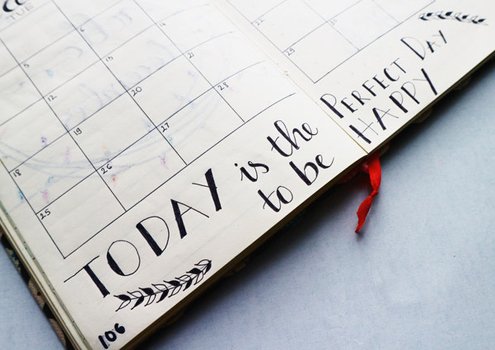Reading time: About 2 minutes
Have you ever discovered the power of routines? The next time you’re struggling to find time to write, see if a routine can help you…
By Ann Gomez
Early in my career, I recall hearing a seasoned entrepreneur on the other side of the I-made-it curve describe what he valued most — flexibility. Many years of hard work had paid off, and he finally had the ability to choose what he did (or didn’t do), along with when and where he worked.
I was enthralled. At the time, flexibility seemed like the ultimate aspiration; the freedom to choose what I worked on and when. No one looking over my shoulder. No one else dictating deadlines. It all sounded so inspiring.
Yes, the benefits associated with flexibility are valued: The ability to shift your schedule to meet an urgent deadline, have lunch with a friend who’s in town, or attend a mid-afternoon school recital.
But like many things in life, flexibility works best in moderation.
Too much flexibility often invites procrastination. Nothing stalls progress more than having an endless amount of time to complete a task. Ironically, our clearest days can sometimes be our least productive. Why do this now when my afternoon is wide open?
When we have too much of any resource, including our time, we are not as careful about how we use it. Sure, an occasional wide-open day, like those we experience when we’re on vacation, can be divinely renewing. But having too much flexibility every day often leaves us struggling to find enough time to get it all done.
On the contrary, when we lean into deadlines, we naturally become more productive. Deadlines bring more rigor to what we’ll do and when we’ll do it. The challenge is fixed deadlines can have a bad rap of being too rigid. Too draconian.
So how do we strike the right balance between the freedom we crave without boxing ourselves into unreasonable deadlines? The answer is to add more structure to our days.
If you don’t have enough time for your core priorities, the solution is to add more structure to your days.
I don’t need to remind you your time is constantly under attack. The free time you seek to focus on your core priorities will never magically appear.
So, I suggest you pay yourself first by blocking time for your core priorities — like writing? — before other activities consume your schedule. Even better, build recurring routines around this blocked time.
Imagine starting every day with a complicated puzzle. Your quest is to find a home for every piece before moving onto other things. Would you feel drained before even starting your day? This is what happens when we try to mix an abundance of tasks with unbridled flexibility.
Our daily tasks are a bit like puzzle pieces. Fitting our tasks into limited time slots gets harder and harder the more tasks we need to complete. Having to do this each and every day is infinitely more onerous.
Flexibility requires you to make the same timing decisions — when to work on a project, start that grant application, fit in exercise — again and again. The more decisions you must make, the more effort you expend. Plus, you are more likely to make suboptimal decisions as decision fatigue sets in. The result is you spend more time scheduling and less time doing. This leads to work overload, delayed results, procrastination, and complication.
In contrast, routines built around your core priorities simplify your days. Routines automate the daily struggle of finding time for what you value most. In an upcoming post, I’ll share how you can use the power of routine to make the most of your days.
Routines help you create homes in your schedule for different types of work and block time for what matters most before other tasks get in the way. This is how you make the most of your time. And that is worth giving up some flexibility.
For more about the power of routines, see Ann’s latest book, Workday Warrior: A Proven Path to Reclaiming Your Time, published by Dundurn Press, 2022.


